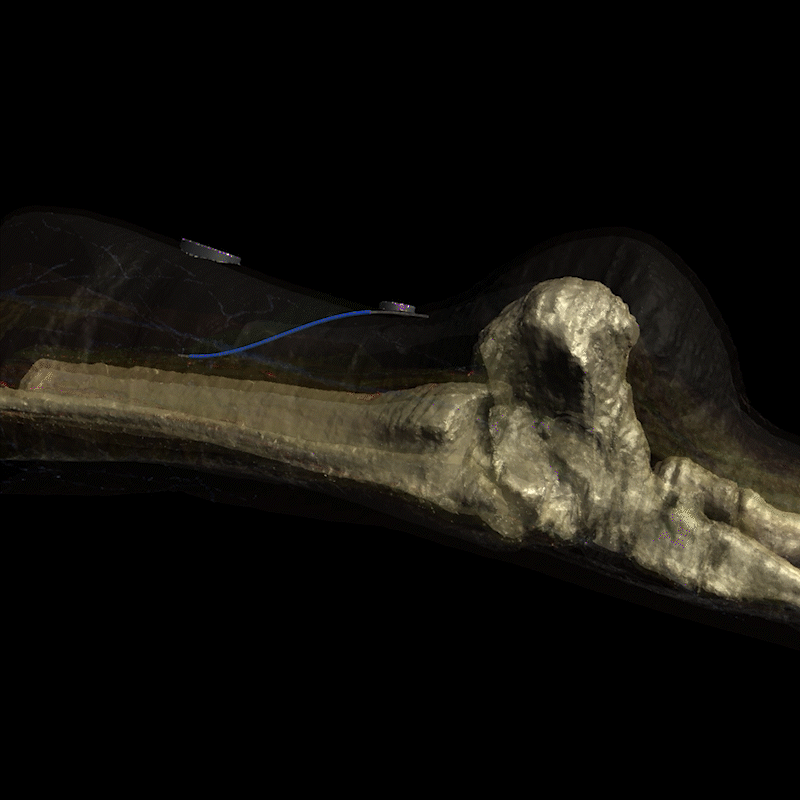
Treatment Mechanisms of Action
How Neural Stimulation May Alleviate Symptoms of Neurogenic and Overactive Bladder
Neuromodulation offers an approach to restoring bladder control by targeting the neurological pathways involved in the dysfunction. Two closely related approaches—sacral neuromodulation (SNM) and tibial nerve stimulation (TNS)—target the same neural control network that governs bladder and pelvic organ activity, but differ in how they access it.
Both methods work by electrically stimulating afferent fibers that proHow Neural Stimulation May Alleviate Symptoms of Neurogenic and Overactive Bladderject to the sacral spinal cord segments (S2–S4)—the key centers that coordinate bladder contraction, urethral sphincter relaxation, pelvic floor tone, and sensations of bladder fullness (Gomez-Amaya et al. 2015). By modulating these pathways, neuromodulation can re-establish balanced communication between the bladder, spinal cord, and brain, alleviating urgency, incontinence, and inefficient emptying.
Neural Pathway Connection
The sacral nerves are the core communication channels between the spinal cord and the lower urinary tract. They integrate both storage-phase reflexes (inhibiting detrusor contractions and maintaining sphincter closure) and voiding-phase reflexes (activating detrusor contraction and sphincter relaxation) (Gomez-Amaya et al. 2015).
Sacral Neuromodulation (SNM) directly targets the sacral nerve roots—typically the S3 foramen—using a small implanted electrode connected to a pulse generator placed under the skin (Peeren et al. 2005). By delivering low-amplitude electrical pulses, SNM modulates sensory input from the bladder and pelvic floor, stabilizing reflex activity within the sacral spinal cord and higher brain centers.
Tibial Nerve Stimulation (TNS) achieves a similar neuromodulatory effect through a more peripheral route (Staskin et al. 2012). The posterior tibial nerve, located near the ankle, contains fibers originating from L4–S3, overlapping with the same sacral plexus roots that control bladder and sphincter function. Electrical impulses delivered to the tibial nerve travel retrograde to the sacral cord, indirectly influencing the same bladder control circuits without requiring an implant or spinal access (Vollstedt and Gilleran 2020).
This shared neuroanatomy explains why stimulating either the tibial nerve (peripherally) or the sacral roots (centrally) can achieve comparable therapeutic outcomes(Amundsen et al. 2025). TNS thus serves as a minimally invasive gateway to the same circuitry that SNM modulates directly (Amundsen et al. 2025).
Figure 2: The urinary system is controlled by multiple sympathetic and parasympathetic nerve pathways, spanning multiple vertebral levels of the spine. To achieve full control of the bladder (on-demand voiding and or continence), one is likely to need multiple electrodes placed across these levels. Reproduced from Gomez et al.
Neuromodulation Mechanism
While the mechanisms of action are not fully understood, it is thought that both sacral and tibial nerve stimulation “rebalance” the micturition reflex network through central and peripheral mechanisms:
(Li et al. 2024)
How does neurostimulation treat bladder dysfunction?
Tibial nerve stimulation works by modulating the neural pathways that control bladder function. The tibial nerve shares nerve roots with the nerves that control bladder and pelvic floor function. When stimulated, it sends signals through the spinal cord to the brain, helping to:
Normalize bladder contractions in overactive bladder
Reduce urgency and frequency symptoms
Enhance bladder capacity and control
This neuromodulation approach addresses the root neurological dysfunction rather than just masking symptoms, offering patients a pathway to restored bladder control.
Image: Realistic simulation of electrical current field propagation through the leg via Injectrode, and action potential initiation on the tibial nerve is provided by Sim4Life®. Sim4Life is a FDA-recognized Medical Device Development Tool (MDDT) for use in developing and testing medical devices, specifically for evaluating the safety of active implantable medical devices (AIMDs) during MRI scans and to simulate neural activation probabilities. More information can be found on the ZMT website (https://zmt.swiss/ and https://sim4life.swiss/.)
References
Amundsen CL, Sutherland SE, Kielb SJ, Dmochowski RR. Sacral and Implantable Tibial Neuromodulation for the Management of Overactive Bladder: A Systematic Review and Meta-analysis. Adv Ther. 2025 Jan 1;42(1):10–35.
Gomez-Amaya SM, Barbe MF, de Groat WC, Brown JM, Tuite GF, Corcos J, et al. Neural reconstruction methods of restoring bladder function. Nat Rev Urol. 2015 Feb;12(2):100–18.
Li X, Li X, Liao L. Mechanism of Action of Tibial Nerve Stimulation in the Treatment of Lower Urinary Tract Dysfunction. Neuromodulation. 2024 Feb 1;27(2):256–66.
Peeren F, Hoebeke P, Everaert K. Sacral nerve stimulation: Interstim therapy. Expert Rev Med Devices. 2005 May;2(3):253–8.
Staskin DR, Peters KM, MacDiarmid S, Shore N, de Groat WC. Percutaneous Tibial Nerve Stimulation: A Clinically and Cost Effective Addition to the Overactive Bladder Algorithm of Care. Curr Urol Rep. 2012 Oct 1;13(5):327–34.
Vollstedt A, Gilleran J. Update on Implantable PTNS Devices. Curr Urol Rep. 2020 May 28;21(7):28.


